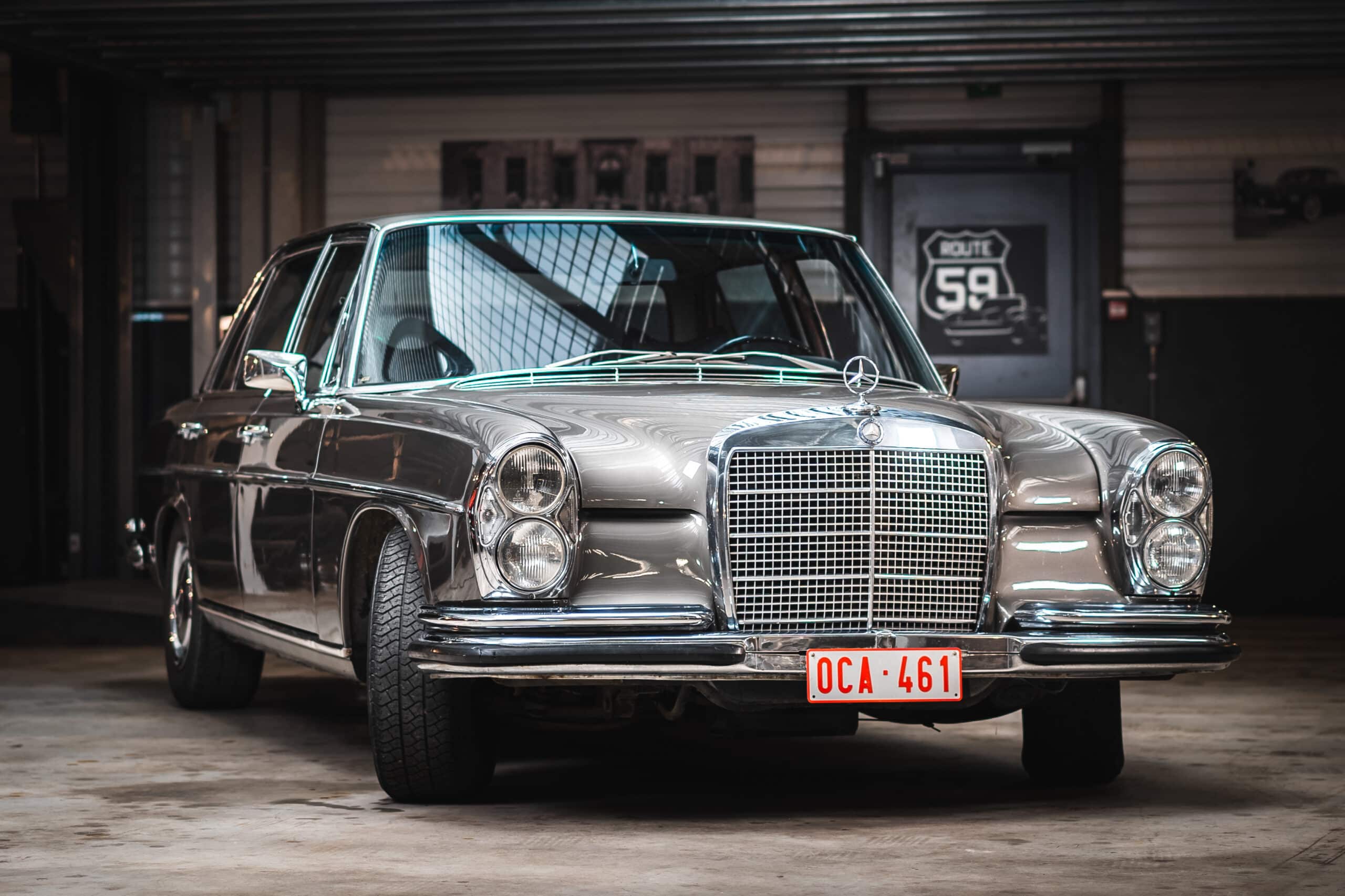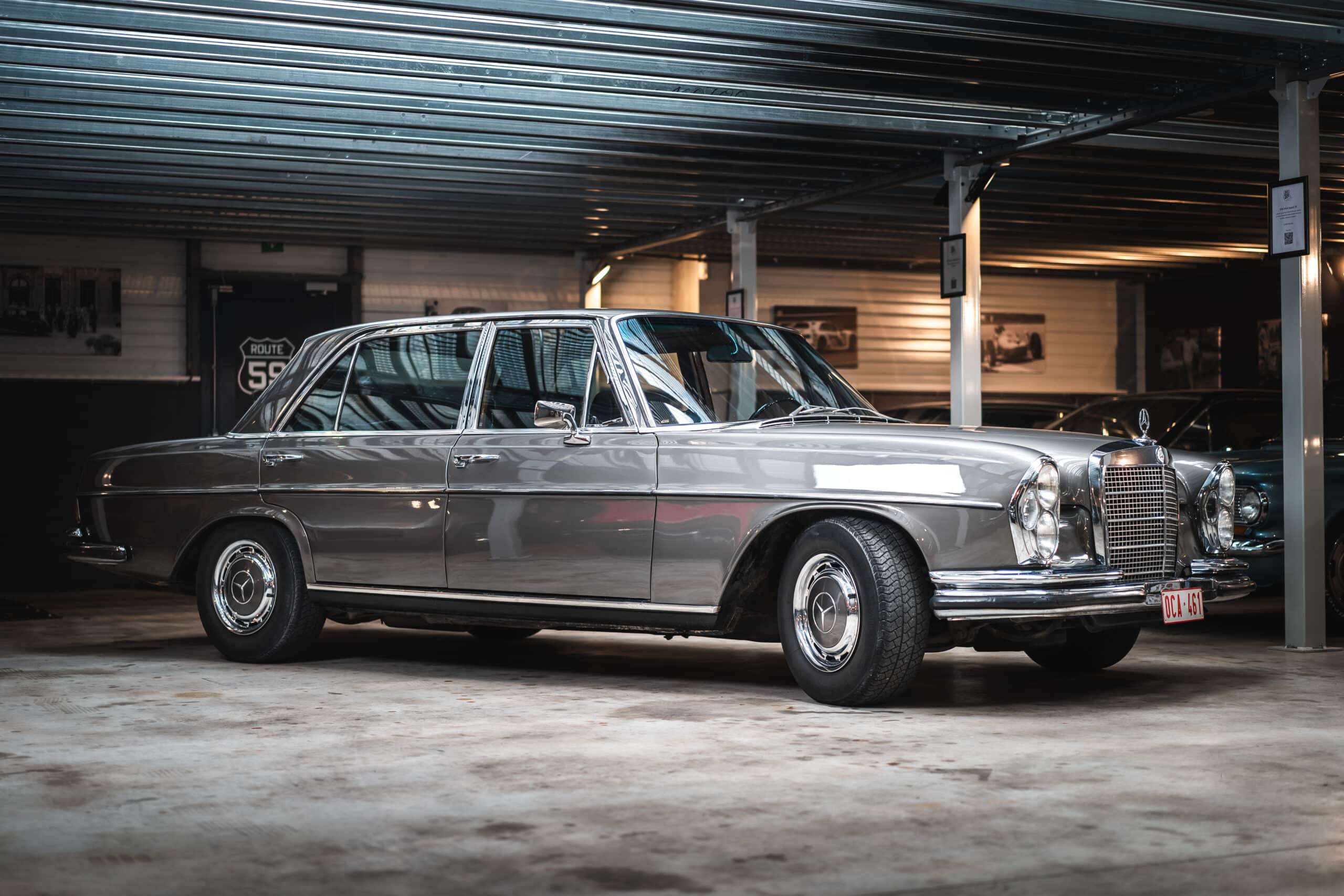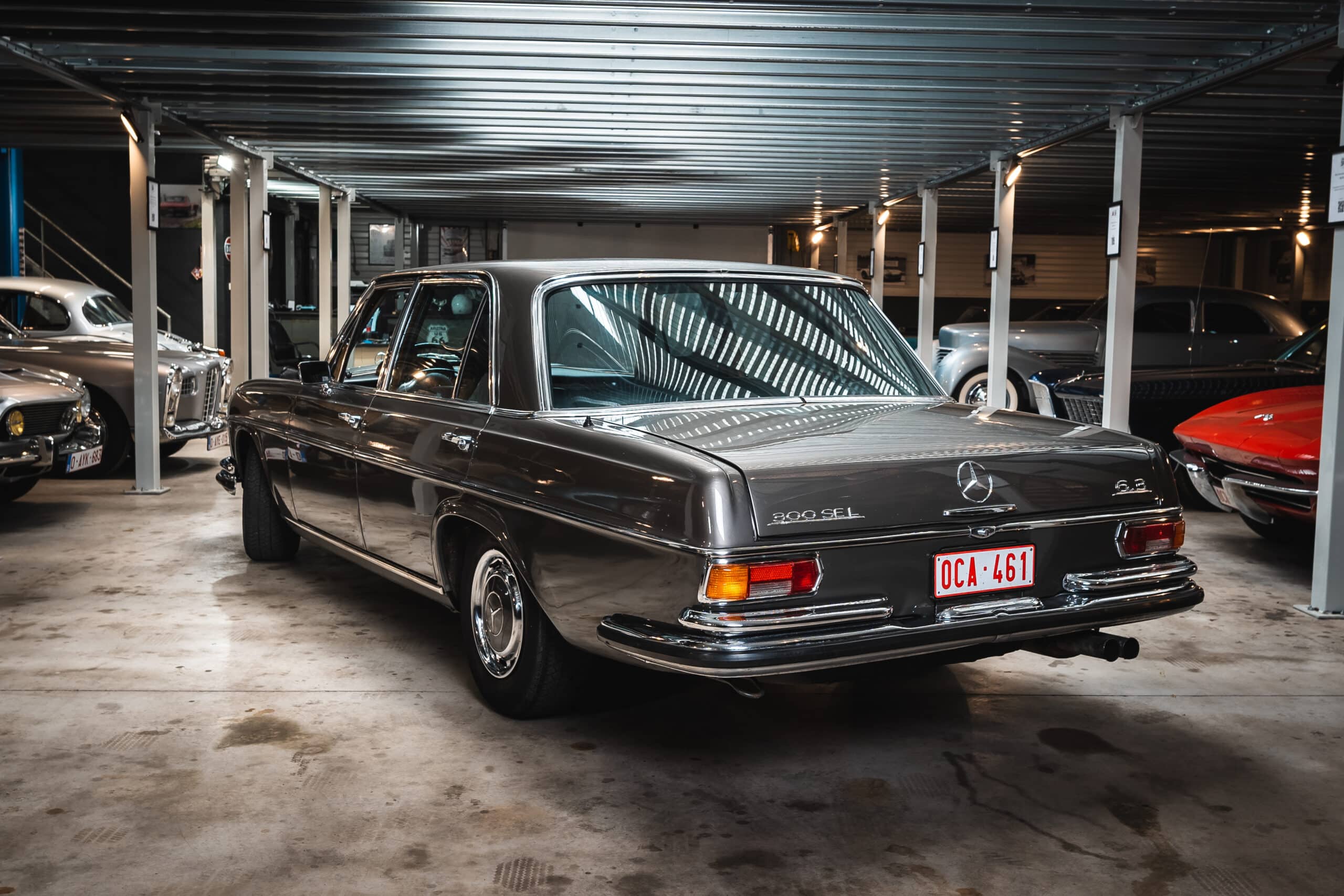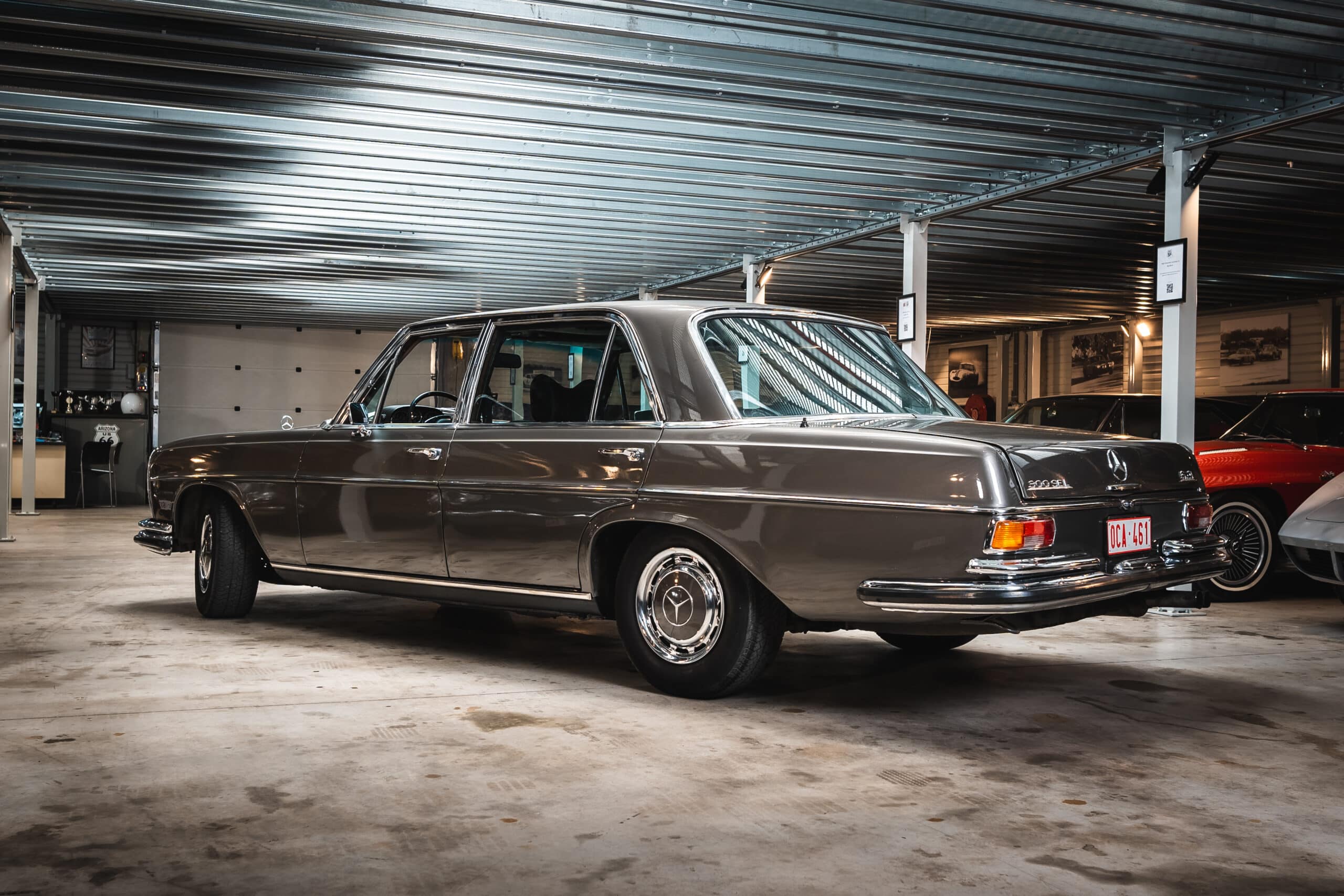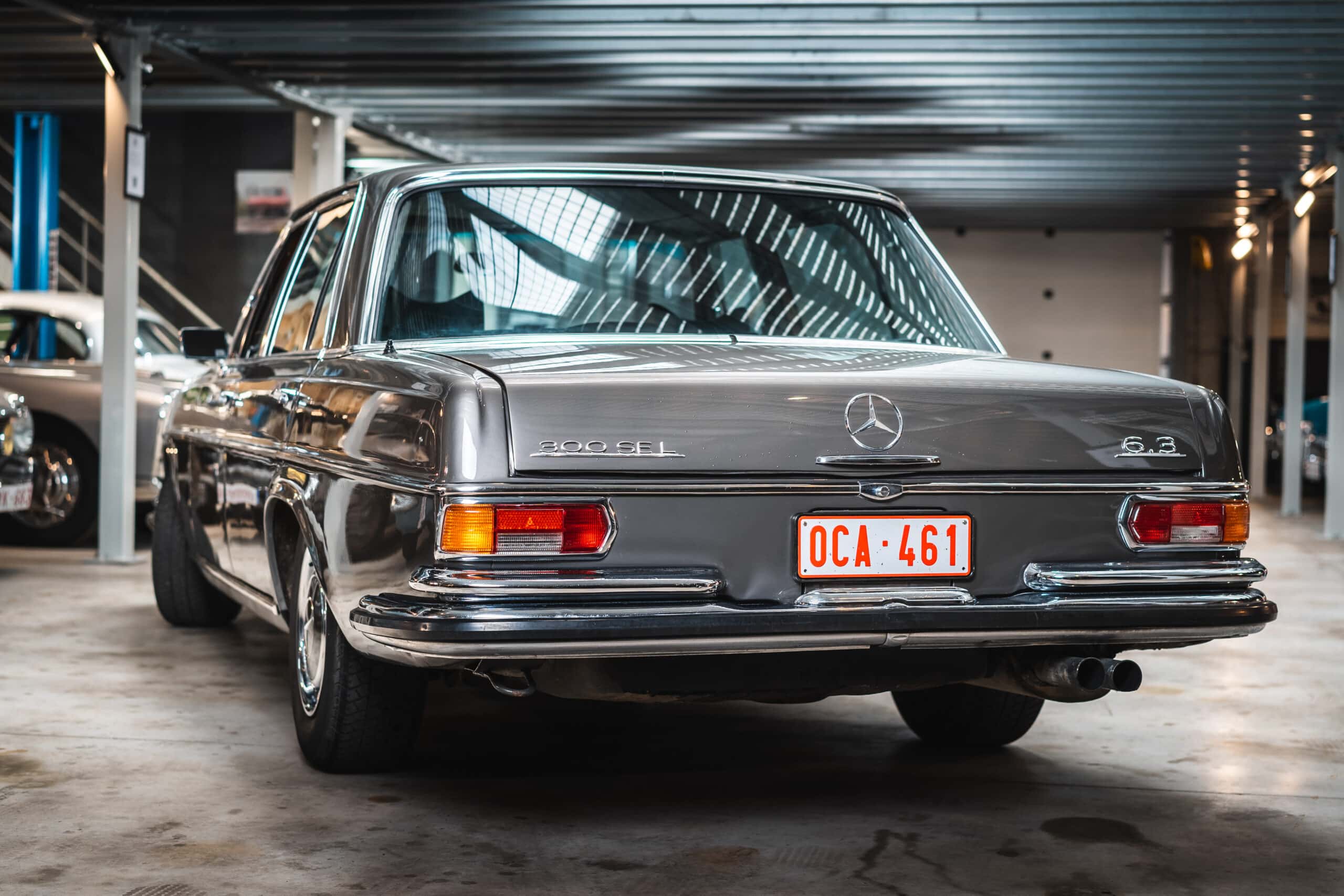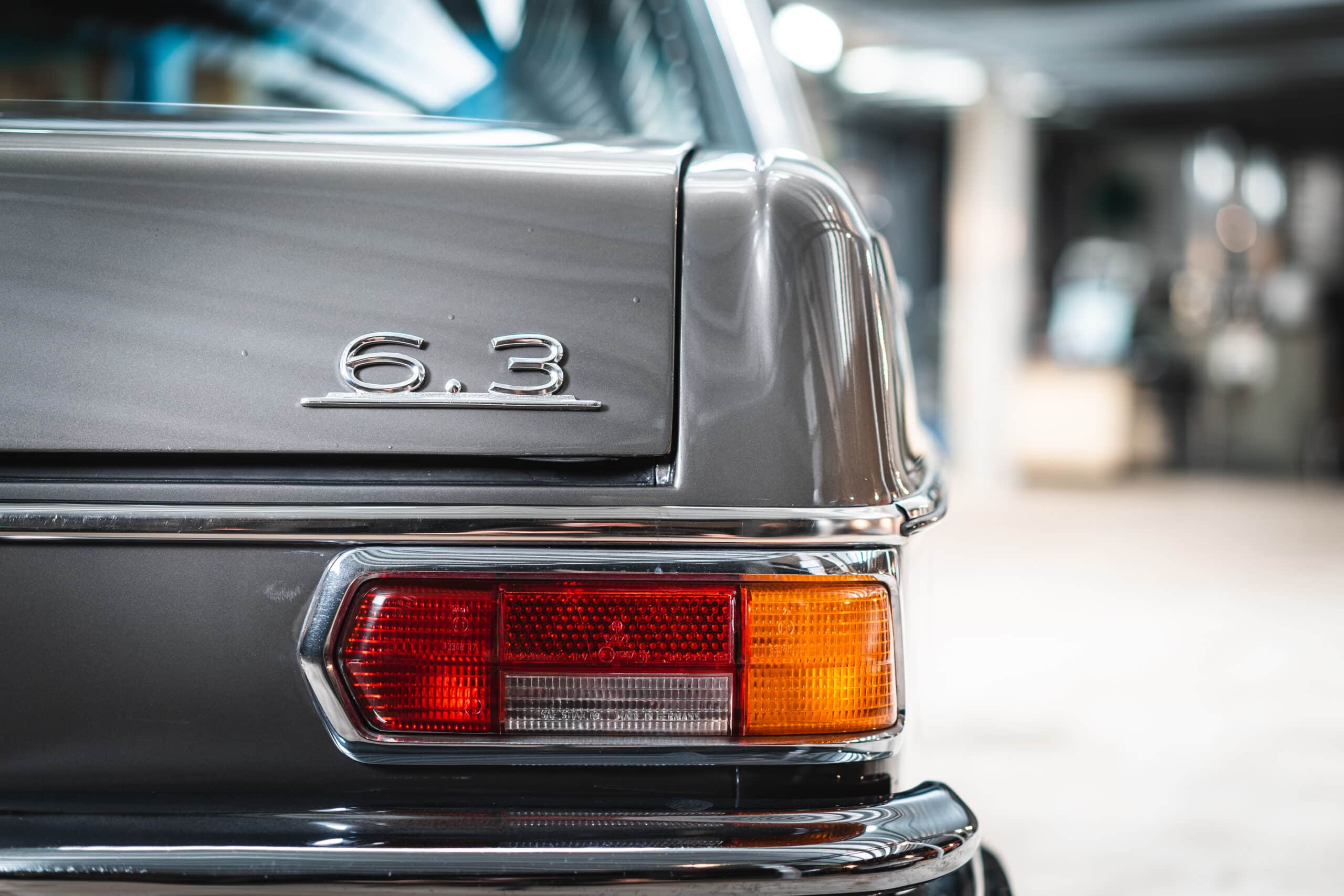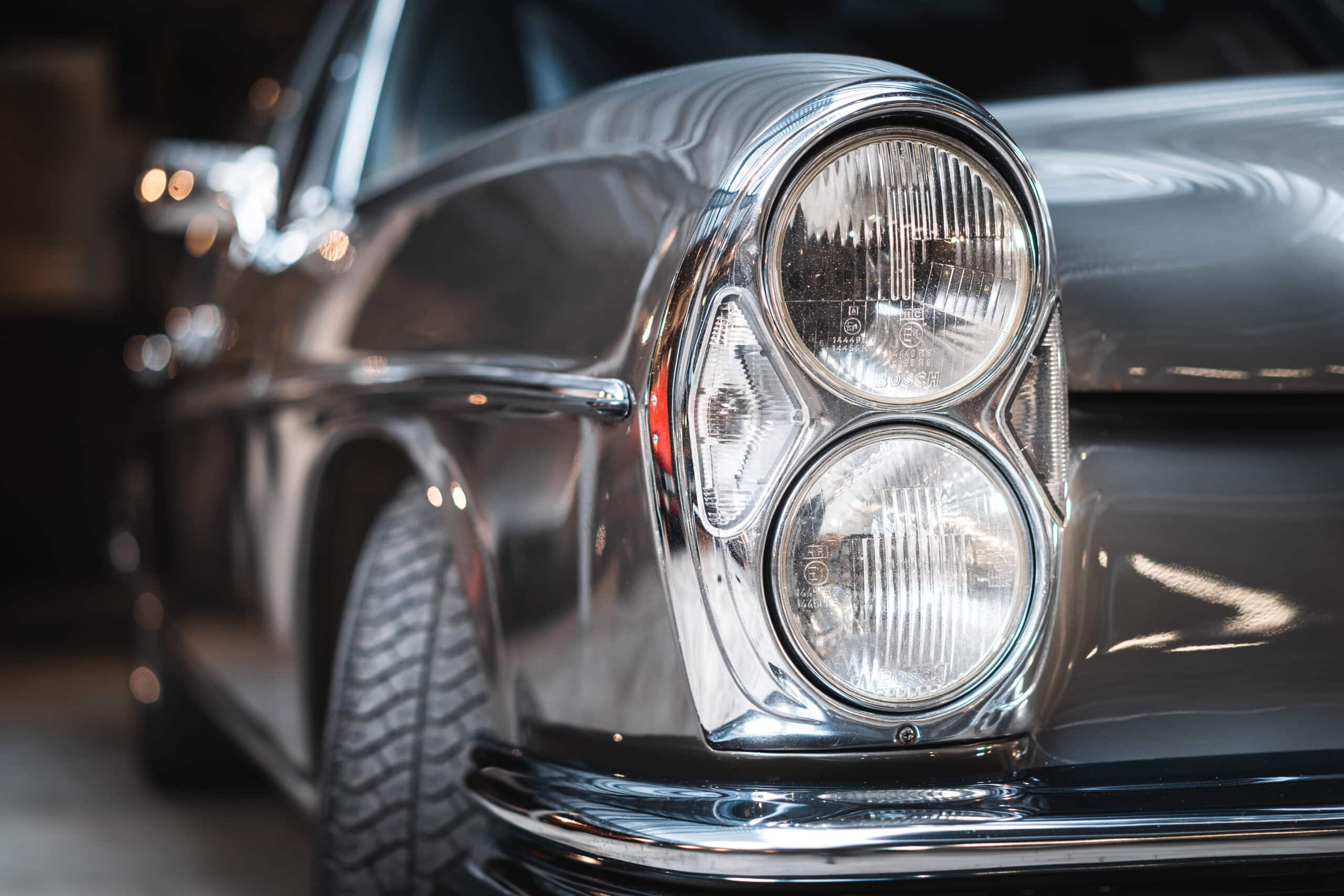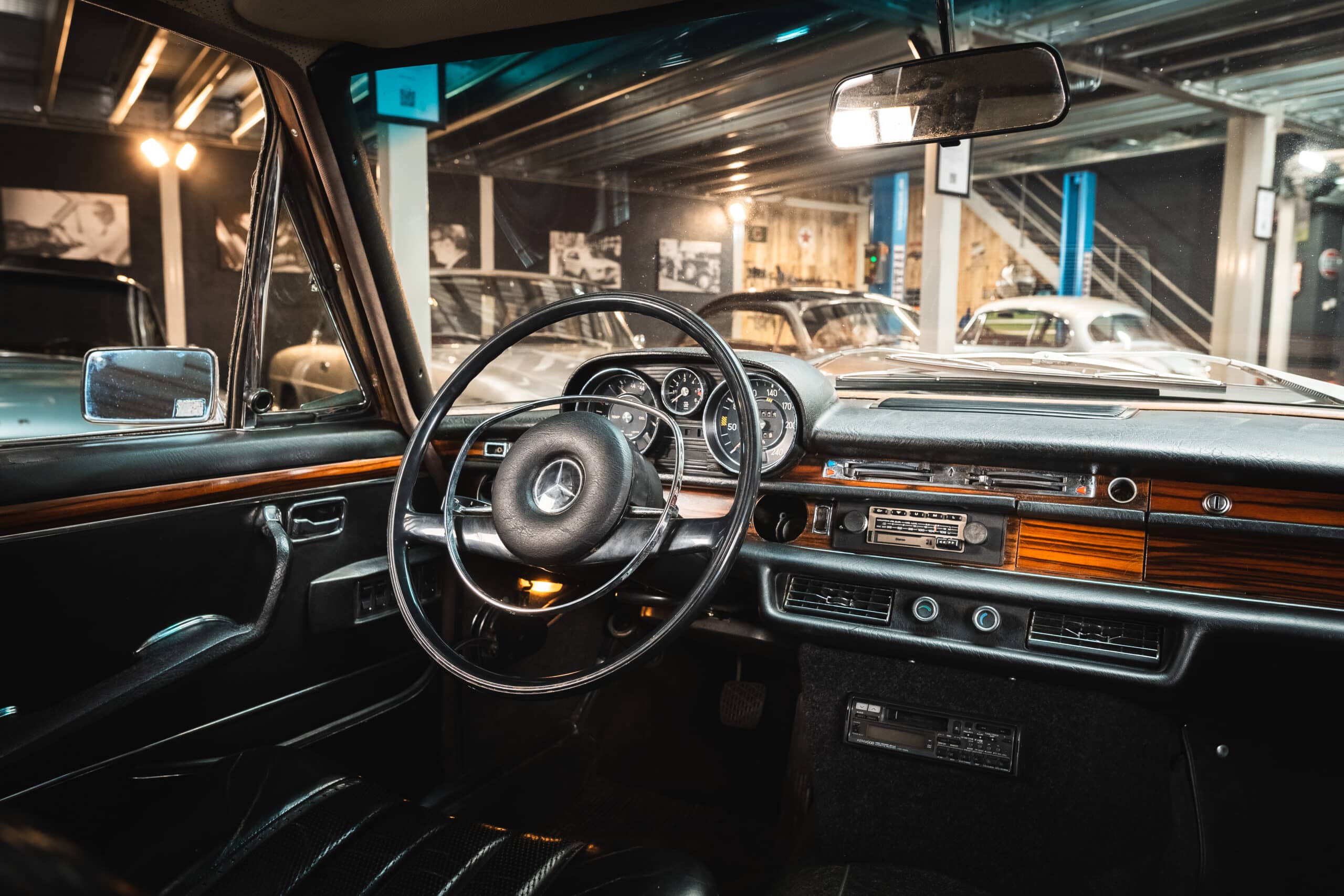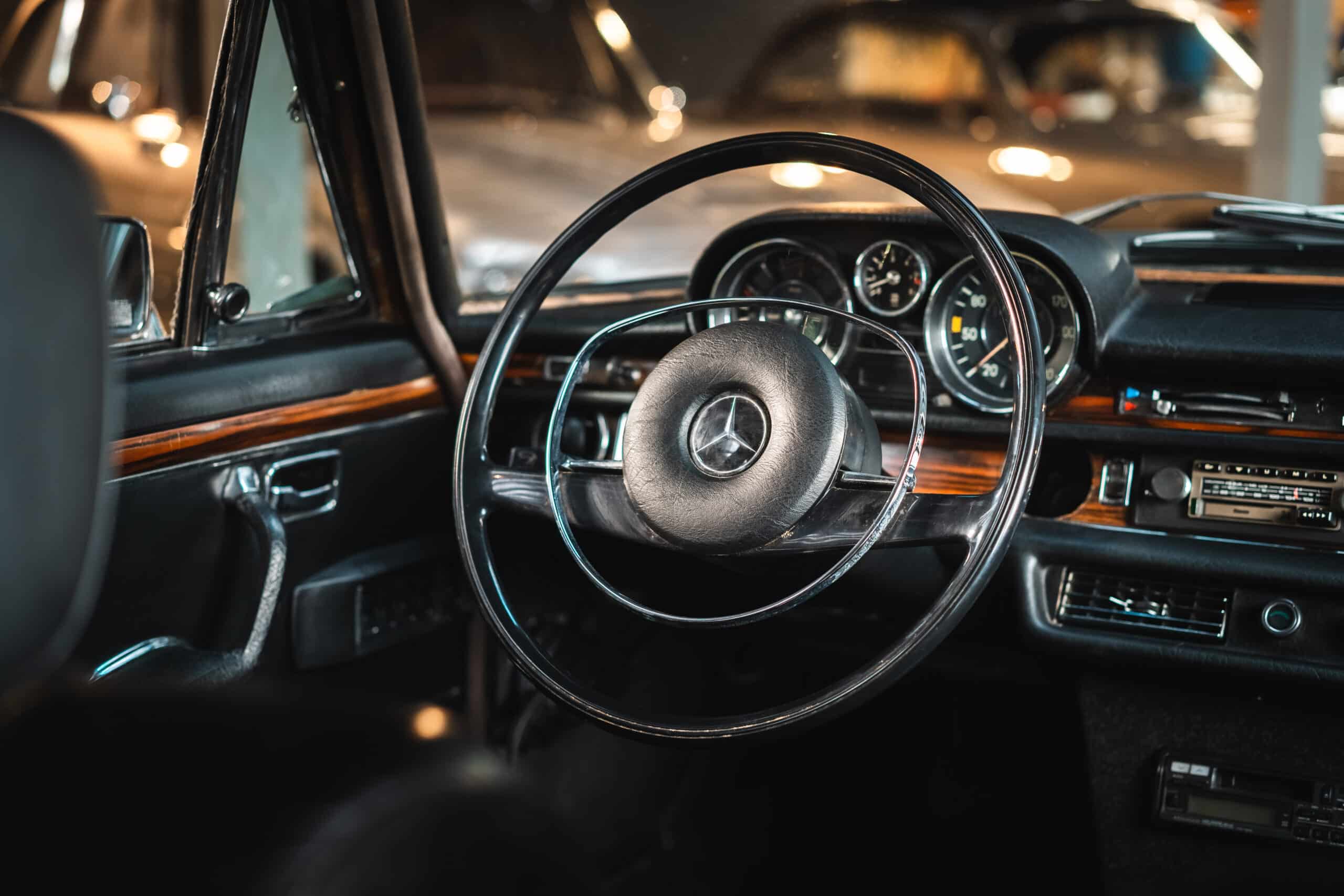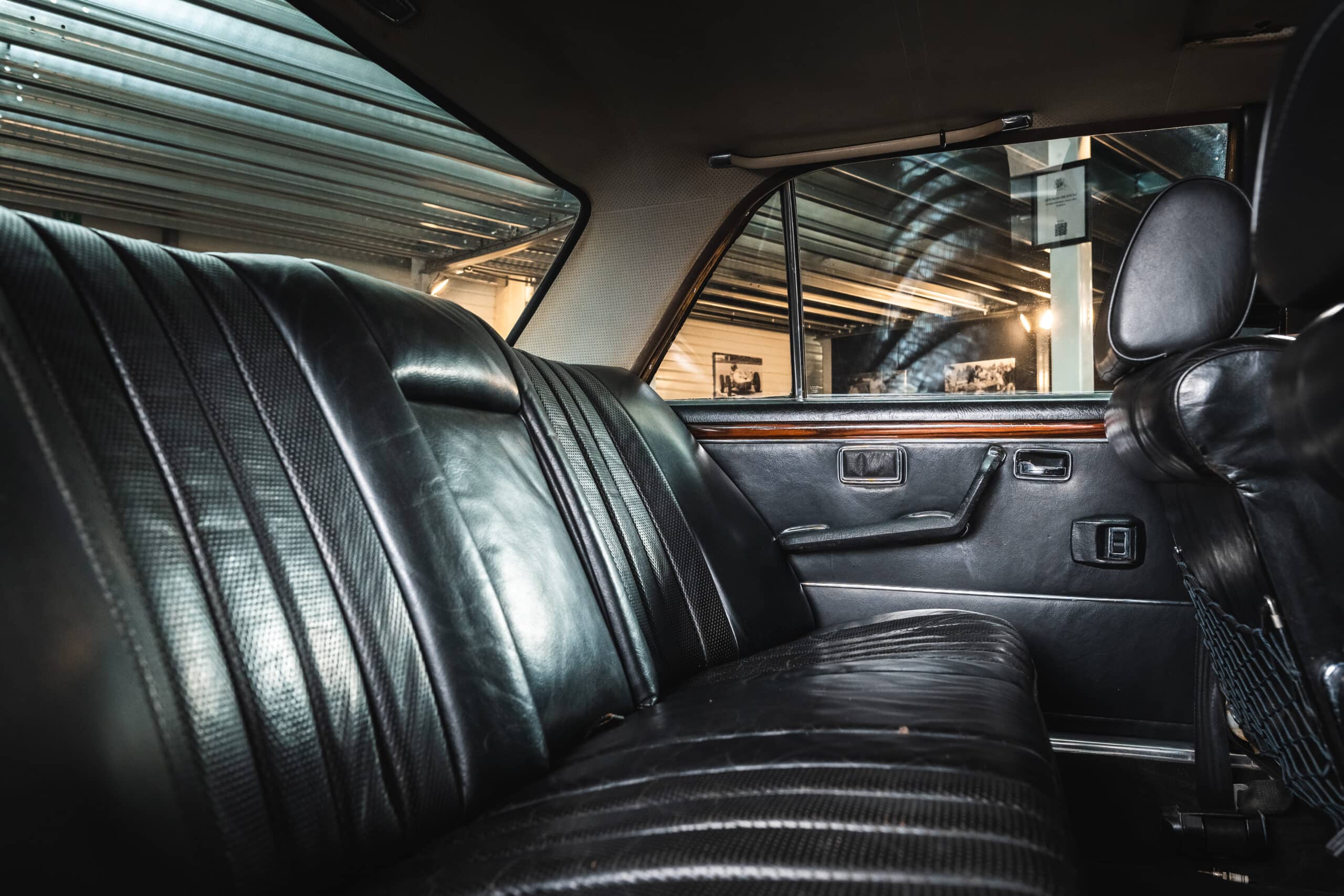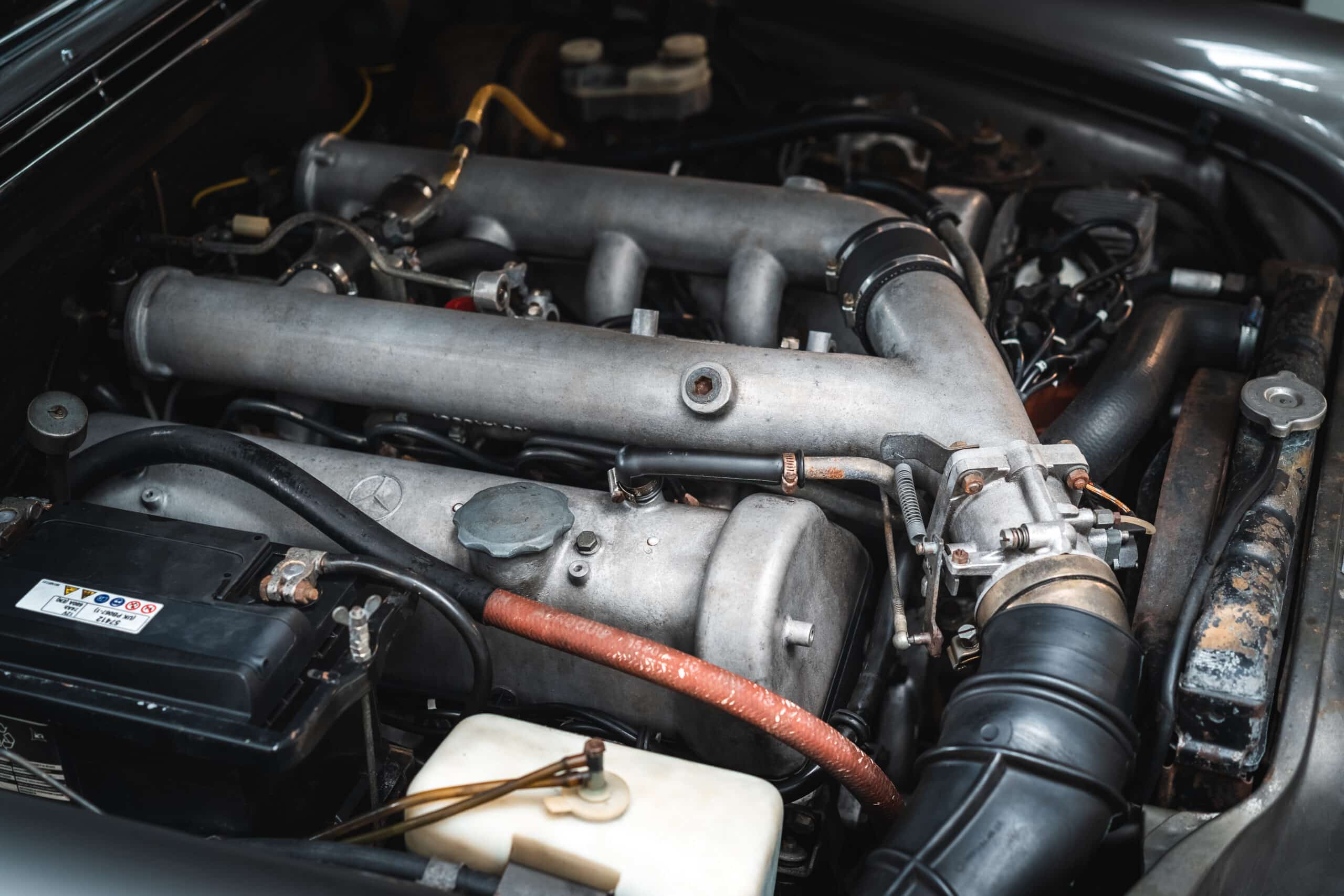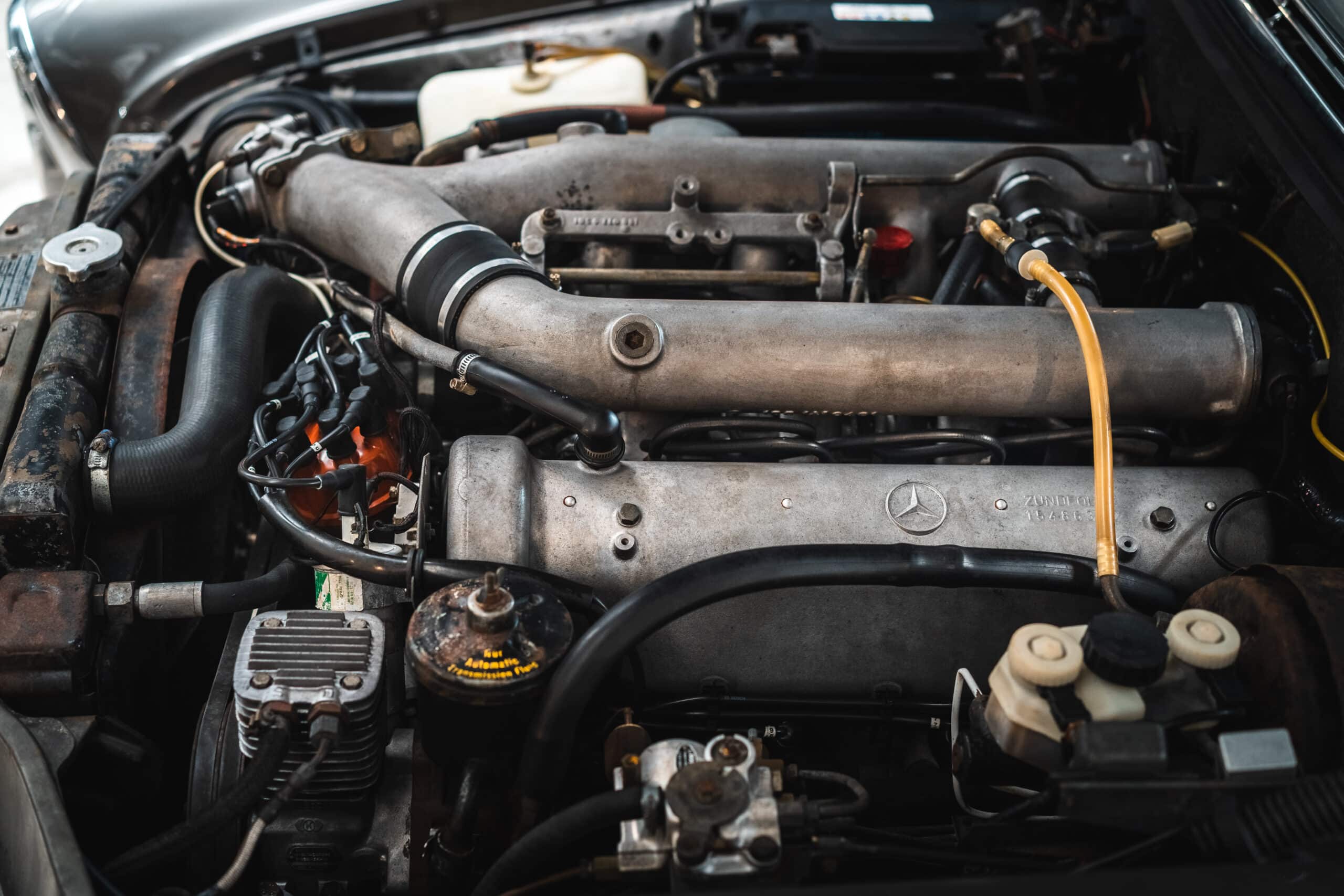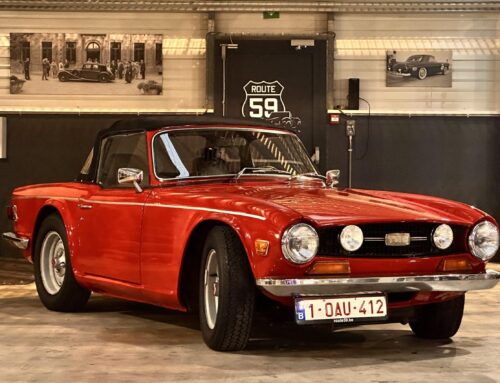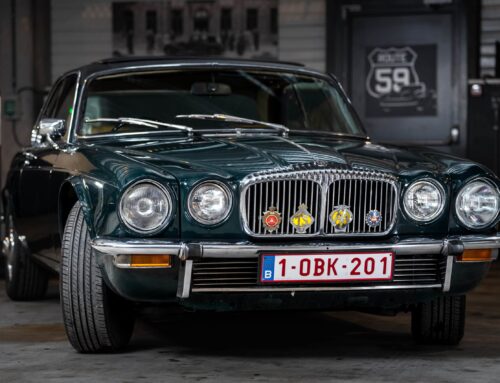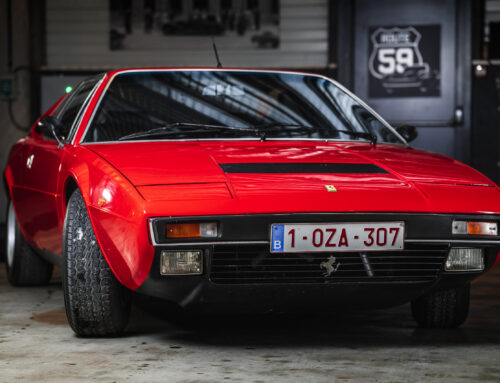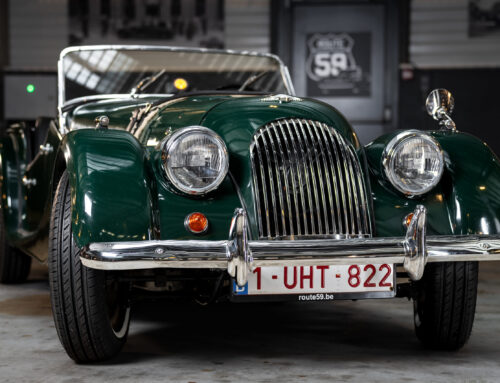Mercedes 300 SEL 6.3
| Brand | Mercedes |
| Model | 300 SEL 6.3 |
| Color | Brown |
| Transmission | 4-speed automatic |
| Pk | 250 ch |
| Year | 1968 |
| Price | Not for sale |
Mercedes-Benz caused a sensation at the Geneva Motor Show in March 1968 with the 300 SEL 6.3 (W 109). Because the Stuttgart-based brand’s top-of-the-line luxury model with a V8 engine offered the performance of a sports car: the acceleration from 0 to 100 km/h in 6.5 seconds and the top speed of 220 km/h were exceptional for the time. Not to mention the comprehensive standard equipment and the inimitable comfort of a Mercedes-Benz. The 300 SEL 6.3 continues to fascinate with its high level of perfection. It has long been one of the most coveted collector’s items bearing the Mercedes star.
Today, the 300 SEL 6.3 is considered a dream classic precisely because of these advantages. The V8 signals its availability with a soft rumble when the key is turned. 184 kW (250 hp) at 4,000 rpm with a curb weight of 1,780 kg: an excellent combination. A light touch of the throttle is all it takes to deliver the power, and within seconds the sedan is in its element on an open country road. She seems to look forward to each turn, then effortlessly exits and glides powerfully down the next straight. The large steering wheel, with its thin rim, is not very familiar at first, but thanks to the servo assistance, driving the “6.3” becomes a very pleasant experience. The sedan impresses not only with its power and perfect handling, but also with its exceptional comfort, generous space and pleasant atmosphere. It’s no wonder that the 300 SEL 6.3, which completed the W 109 series as the flagship model in 1968, set new standards at the time. It is considered the ancestor of all Mercedes-Benz high-performance sedans.
The Mercedes-Benz 300 SEL 6.3 was first presented at the Geneva Motor Show in March 1968. The press information summarized its attributes, “This model is probably unmatched in its combination of maximum comfort and extraordinary performance. It meets the desires of customers who expect above-average power and performance.” The sedan filled the gap between the 300 SEL and the 600 (W 100), which adopted the V8 engine of the 300 SEL 6.3. The new model was supposed to occupy a leading position in the international range.
Externally, the sedan is virtually unchanged from the other models in the W 108/109 series. Only the “6.3” lettering on the right side of the trunk lid, the twin halogen headlights with the latest lighting technology and the additional front fog lights distinguished the otherwise very discreet flagship model.
The car magazine “auto, motor und sport” wrote about the Mercedes-Benz 300 SEL 6.3 in its issue 6/1968: “We tested one of the first examples, which did not yet bear the designation ‘6.3’. The absence of this designation probably surprised a few Porsche 911 and 911 S drivers – otherwise kings of the Autobahn – who found themselves in the wake of the inoffensive and distinguished Mercedes. If any of them should be reading this right now: no need to complain to the factory about the car’s lack of performance.”
In the cockpit, a speedometer with a larger scale, a rev counter in the standard version and a different positioning of the clock distinguish the “6.3” from the 300 SEL. The air suspension and automatic level control are an excellent basis for the high performance model: it automatically adjusts to changing loads. The spring travel and thus the vehicle’s attitude remain constant – to the great benefit of driving comfort. Internally ventilated disc brakes ensure optimal deceleration. The comprehensive standard equipment also includes power steering, four-speed automatic transmission, differential lock, power windows and pneumatic central locking.
The muscular V8 engine with a displacement of 6,333 cubic centimeters was taken from the prestigious Mercedes-Benz 600 limousine (W 100) with very slight modifications. It is equipped with an eight-piston injection pump with cold start and automatic preheating that takes into account the position of the accelerator pedal, engine speed, air pressure and coolant temperature. Fuel is injected at high pressure into the intake manifold through eight nozzles. This arrangement, which has proven itself for years in all Mercedes-Benz SE models, ensures efficient combustion. The front part of the chassis, the transmission tunnel and the floor have been modified to accommodate the W 109 series engine.
The 300 SEL 6.3 was the brainchild of Erich Waxenberger, a test engineer at Mercedes-Benz. In the 1960s, he recognized the potential of the Model 600 V8 engine for the W 109 series. Initially, he built a test car without the knowledge of the head of passenger car development, Rudolf Uhlenhaut. However, Uhlenhaut could not stay in the dark for long: sitting in his office, he heard the dull roar of the prototype’s engine as it passed by, and immediately called Waxenberger in for a report – whereupon he agreed to continue the development work. Those who knew Uhlenhaut could imagine him smiling discreetly as he signed the official development order.
A total of 6,526 units were produced until 1972. This relatively large volume for the time marked the entry of Mercedes-Benz into the powerful sedan segment.
This copy is in good original condition, but has a number of flaws such as reactions in the paint (about ten years old) and tears in the front seats. Mechanically, the engine runs well and the air suspension works. The vehicle is ready to drive, equipped with 4 new tires, but can be upgraded.


